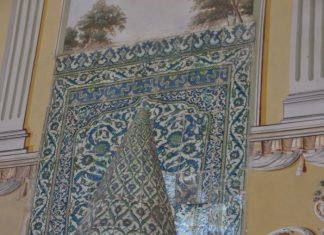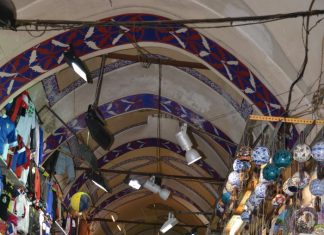Sardis
A Journey Through Ancient Lydia
Historical Overview
Situated in the ancient region of Lydia, Sardis unfolds its rich history at the foothills of the Tmolus Mountains, commanding a view of the Hermus River plain. Evidence of human activity dates back to the Palaeolithic period, around 50,000 B.C. Recent excavations primarily focus on the Archaic era, particularly the 7th and 6th centuries B.C., when Sardis reached its zenith as the capital of the Lydian empire Phrygian Art and Culture in Anatolia. Additionally, attention is given to the Late Roman era when the city continued to thrive.
Archaeological Marvels
Archaeological highlights from the Archaic period include the royal burial mounds at Bin Tepe, the city wall, and a gold-working installation on the Pactalus River. Monuments from later periods, such as the Hellenistic, Roman, and Byzantine, boast structures like the temple of Artemis, a bath-g
Phrygian Art and Culture in Anatolia
Influences and Connections
Phrygian art, shaped by influences from Hittite and Urartian cultures, played a role in inspiring Etruscan art in Italy. Simultaneously, the Phrygians were directly influenced by the Urartu civilization in Eastern Anatolia. An example is the incorporation of the Urartian bull’s head figure into a distinctly Phrygian cauldron. Metalwork, utilizing known metal ores, gained prominence in the Early and Mid-Bronze Ages from 2500 BC. However, it was around 1000 BC that Phrygian metalwork, borrowing from pottery and metal vessels, became widely popular.
Phrygian Art Categories
Phrygian art can be categorized into three groups:
Local Phrygian ware
Urartian import ware
Assyrian import ware
These categories further distinguish artifacts found in mounds dating before 695 BC.
Evolution of Phrygian Pottery
Phrygian pottery during this period showcased fine polychrome ware, categorized as early and
Early Christian Influences and Phrygians in Anatolia
Early Christian Influences
The early spread of Christianity in this region owes much to St. Paul. However, the 2nd century AD witnessed the emergence of two distinct sects: Montanism and Novationism. Montanism, rooted in the teachings of the local prophet Montanus, prophesied the imminent end of the world. Novationism, named after the Roman theologian Bishop Novatian, gave rise to the followers known as “the pure” or “katharoi” in Greek. This movement, later influencing the Cathar heresy of the Middle Ages, staunchly opposed the readmission of lapsed Christians into the Church Sardis.
Phrygians in Anatolia Builders and Rulers
The Phrygians, part of the “people of the Aegean Sea” migrating tribes, arrived in Anatolia around 1200 BC. Initially settling in Central Anatolia, they established their towns over the ruins of Hittite cities such as Hattusas, Alacahöyük, Pazarli, and Alisar. By the early 8th
Hurri Civilization
Mitanni Kingdom and Cultural Influence
Establishment and Rule of the Mitanni Kingdom
The Hurri civilization emerged in eastern Anatolia and was governed by the Mitanni kingdom, led by a king with Indian descent. Positioned between the Hittites and Assyria, the Hurrians originated from the mountains south of the Caspian Sea. In the late 15th century B.C., the beginning of the Hittite Empire saw an increase in Hurrian names within the royal family Hatti Civilization.
Distinct Hurri Language and Cultural Legacy
The Hurri language stood as a distinct entity, separate from others. The culture and language of the Hurri civilization were extensively utilized by Urartians and Hittites in the subsequent centuries. Their gods exhibited similarities to Hittite deities, leading many to suspect a Hurrian influence.
Title: Heraclitus of Ephesus: Influential Greek Philosopher
Introduction to Heraclitus
He
Hatti Civilization
The Hatti Civilization (2500-2000 B.C.) Ancient Anatolian Settlers
Ancient Hatti Civilization
The Hattis, among the earliest settlers in Anatolian history, ruled central Anatolia for approximately 500 years. Preferring small city kingdoms, they had a distinct language compared to other influential Anatolian civilizations. Mesopotamian influences are evident in Hatti art and culture.
Key Cities and Religious Beliefs
Prominent cities like Mahmatlar, Horoztepe, Alacahoyuk, and Hattus were situated within the Kizilirmak (Red River) bend. The Hattis believed in multiple gods representing various natural elements in animal form. Statues of their popular gods can be found in major Turkish museums.
Hatti and Hittite Principalities Period (2000-1750 B.C.)
Indo-European Migration and Coexistence
In the late 3rd millennium B.C., a significant migration occurred from North Europe to the milder south. The Hittites, part of the Indo-Europ
Gordium
A Historical Overview
Ancient Capital and Trade Hub
Gordium is believed to have been the capital of Meshech, located where the Royal Road of Persian Kings intersected the Sangarius (Sakarya) River. This positioning made it a bustling commercial center, as noted in the Old Testament, Ezekiel 27:13, mentioning Meshech’s involvement in the slave and bronze trade.
Early Settlement and Hittite Influence
Excavations over the past four decades revealed its occupation as early as the third millennium B.C. Between 2000 and 1200 B.C., Gordium served as a significant Hittite outpost with Assyrian colonists. The Phrygians settled in the 9th century Hurri Civilization, marking the city’s peak prosperity in the 8th century.
Decline and Resurgence
Cimmerian invasions in 690 B.C. led to the destruction of Gordium, but it was rebuilt by the Lydians. In 547-546 B.C., Cyrus and his army destroyed the city
Rome’s Ascendancy in the East
The Second Mithradatic War (83-81 B.C.)
The conflict unfolded as Roman general Lucius Licinius Murena initiated an invasion of Pontus, ultimately facing defeat. In 74 B.C., Nicomedes III of Bithynia bequeathed his kingdom to Rome, prompting Mithradates VI to invade Bithynia, marking the initial phase of the Third Mithradatic War (73-65).
Lucullus’ Campaign and Retreat
Lucius Licinius Lucullus, the Roman commander Tigranes the Great, expelled Mithradates and invaded Armenia, seizing Tigranocerta in 69 B.C. However, challenges in the mountains and harsh climate impeded further progress. After a significant victory at Artaxata, Lucullus faced a reluctant troop and retreated to the Euphrates valley. Mithradates regrouped in Pontus, and Lucullus was replaced by Gnaeus Pompeius Magnus, or Pompey the Great.
Pompey’s Swift Victories
Pompey’s military prowess contrasted with Lucullus, achieving swif
Tigranes the Great
Rise to Power
The Decline of the Seleucid Empire
Antiochus VII marked the end of the strong Seleucid rulers, leaving only Syria within the shrinking empire’s grasp. Successors struggled to retain control, facing breakaways like Tyre and Sidon seeking independence before Roman intervention. Damascus evolved into the Arab Ituraean kingdom Mithradates VI of Pontus. A significant influence during this period was Queen Cleopatra Theos, daughter of Egypt’s Ptolemy VI, legitimizing three Seleucid monarchs through marriage.
Constant Struggles for Succession
Following Cleopatra’s death in 121 B.C., succession disputes plagued the Seleucid Empire. Between 96 and 83 B.C., six contenders vied for the crown simultaneously, showcasing the empire’s internal strife.
Missed Opportunities for the Parthians
Despite contributing to the Seleucid downfall, the Parthians, hindered by Saka inv
Mithradates VI of Pontus
Clash with Rome
Roman Supremacy in the Mediterranean
After the Punic Wars, Rome emerged as the dominant power in the Mediterranean. The Roman province of Asia expanded through bequests and campaigns against Cilician pirates. Pergamun, under the last king Attalus III, bequeathed its kingdom to Rome, further solidifying Roman influence. By the end of the century, Roman protectorates included Egypt, Bithynia Rome’s Ascendancy in the East, Cappadocia, Galatia, and Paphlagonia. Mithradates VI of Pontus, however, viewed Rome as an obstacle to his ambitions.
Mithradates VI’s Early Reign
Mithradates VI inherited the Pontic throne at twelve in 120 B.C. Despite his young age, he proved a skilled organizer and expanded his kingdom by annexing Colchis (Georgia) and the Crimea in the last decade of the second century. Forming alliances with Parthia and Armenia, he married his daughter to Armenia’s Ki
Ancient States of Asia Minor
Pontus, Cappadocia, and Pergamun
Pontus A Multilingual Region
The northern coast of Asia Minor, known as Pontus, was dominated by a feudal Persian nobility. Despite its fertility, the region was home to people speaking twenty-two different languages in its villages. King Mithradates I (301-266), a partially Hellenized Persian claiming Achaemenid descent, founded the state, gaining independence from both Antigonus I and the Seleucids. Welcoming the arrival of the Gauls like the Bithynians Turmoil and Decline in the Seleucid Kingdom, he established the capital in Amasia, later moved to Sinope in the second century.
Rise of Pontic Power
Mithradates’ successors strengthened the country, employing many Greeks and earning recognition as a Hellenistic power. Pharnaces I (185-169), one of them, ambitiously proposed a Pontic empire encircling the Black Sea. Mithradates V (150-120), the son of














